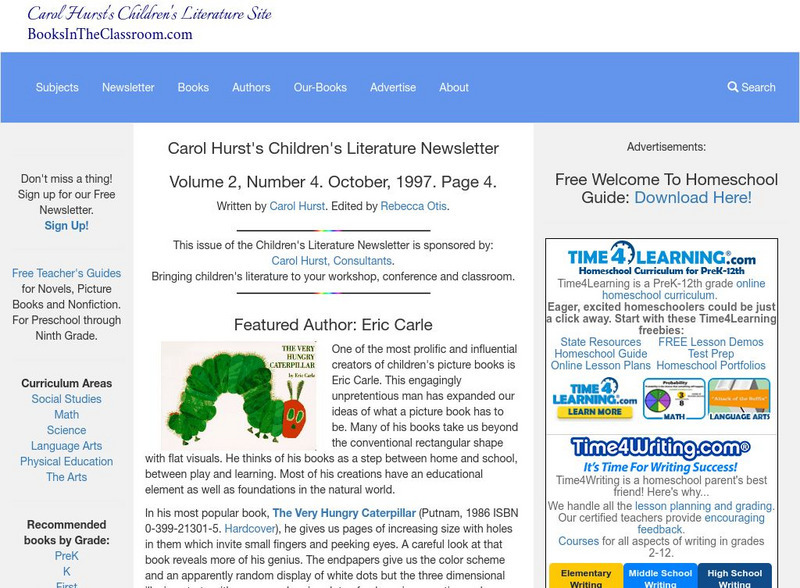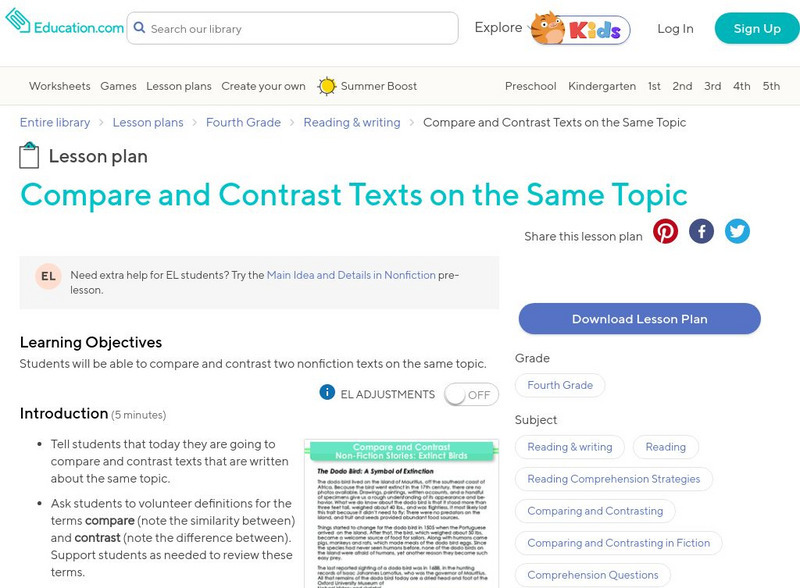Hi, what do you want to do?
TES Global
Blendspace: Text Connections Pompeii in Poetry, Fiction and Nonfiction
A fourteen-part learning module with links to texts, videos, and websites that demonstrate text connections through various texts about Pompeii.
Beacon Learning Center
Beacon Learning Center: Web Lesson: Get the Idea
Read through a lesson about main ideas and supporting details to understand their importance. Practice choosing the main idea of three nonfiction paragraphs. Features practice activities to enhance learning.
Writing Fix
Writing Fix: Snowball Note Making and Summarizing
In this lesson, students will engage in this post-reading strategy for a nonfiction or a fiction piece. Each student will take notes on a four-square square graphic organizer about something they already knew, something they found...
SMART Technologies
Smart: Main Idea & Details
This interactive lesson offers clarification and practice in the realm of main ideas and details.
ReadWriteThink
Read Write Think: Exploring Cross Age Tutoring Activities With Lewis and Clark
Interaction and adventure draws high school and elementary school students together as they analyze stories about the Lewis and Clark expedition.
Georgia Department of Education
Ga Virtual Learning: Anglo Saxon Literature
This lesson focuses on Anglo-Saxon Literature including the importance of the monks who listened to the stories and poems and wrote them down and the two nonfiction pieces that had an impact on creation of the written language: The...
Texas Education Agency
Texas Gateway: Literary Text: Hyperbole and Understatement
[Accessible by TX Educators. Free Registration/Login Required] In this lesson, you will learn to recognize hyperbole and understatement in nonfiction.
Texas Education Agency
Texas Gateway: Literary Text: Irony, Sarcasm, and Paradox
[Accessible by TX Educators. Free Registration/Login Required] In this lesson, you will learn to evaluate the role of irony, paradox, and sarcasm in literary nonfiction such as speeches and essays. Take a look at the chart; it contains...
Utah Education Network
Uen: Enlightening Explorations, Part Iii
This instructional activity contains the following labs: Rainbows, Refraction with Prisms, and What Color Is It? Students will study light by reading various nonfiction texts and viewing a video instructional activity. Then students will...
Utah Education Network
Uen: Balanced Diet
In this lesson plan, 2nd graders will learn about the components of a balanced diet. Students will analyze charts and then self-report their own foods in categories. Several fiction and nonfiction books are listed as additional resources.
Annenberg Foundation
Annenberg Learner: History/social Studies: Adapting and Modifying Sources
This interactive demonstrates how a piece of primary source text can be adapted or modified for readers at different levels of proficiency in order to ensure their understanding.
Polk Brothers Foundation Center for Urban Education at DePaul University
De Paul University: Center for Urban Education: What Is a Fable? [Pdf]
"What is a Fable?" is a one page, nonfiction passage about what a fable is including animals that talk and a lesson learned. It is followed by an open-ended question which requires students to provide evidence from the story; it includes...
Alabama Learning Exchange
Alex: Vocabulary Magic
Using the book Farmer Duck, this instructional activity will take words that are unknown to students and teach students how to determine their meanings. This will help open up the world of reading to students.
Alabama Learning Exchange
Alex: Play the Dewey Decimal System Game
This lesson plan introduces the 10 main categories used in the Dewey Decimal Classification System for non-fiction bookshelf arrangement. A slideshow will be presented to students to help them learn details about the Dewey Decimal...
South Carolina Educational Television
Know It All: Non Fiction Text Features
Fifth graders will use non-fiction books to identify and explain how text features help them as individual readers.
Books in the Classroom
Carol Hurst's Children's Literature Site: Eric Carle
What do you know about Eric Carle, the author? This Carol Hurst site highlights some interesting facts about this author's life and refers to some of his books.
Education.com
Education.com: Compare and Contrast Texts on the Same Topic
[Free Registration/Login Required] Explain that even if two texts are written about the same topic, they can have different information depending on the author's perspective or the source of the information. When we compare two texts on...











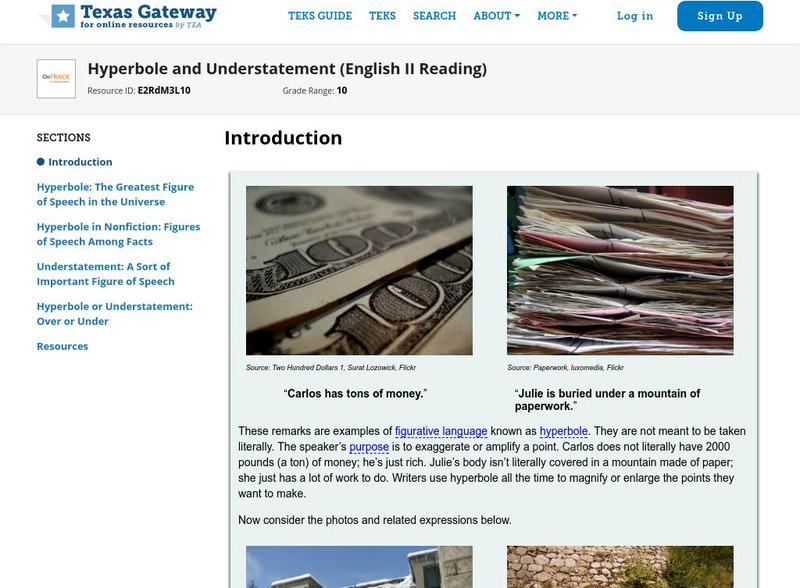
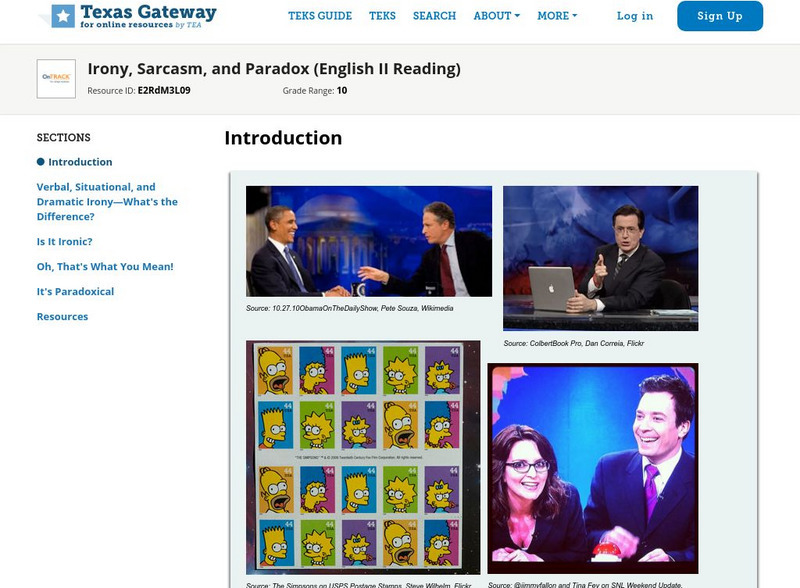

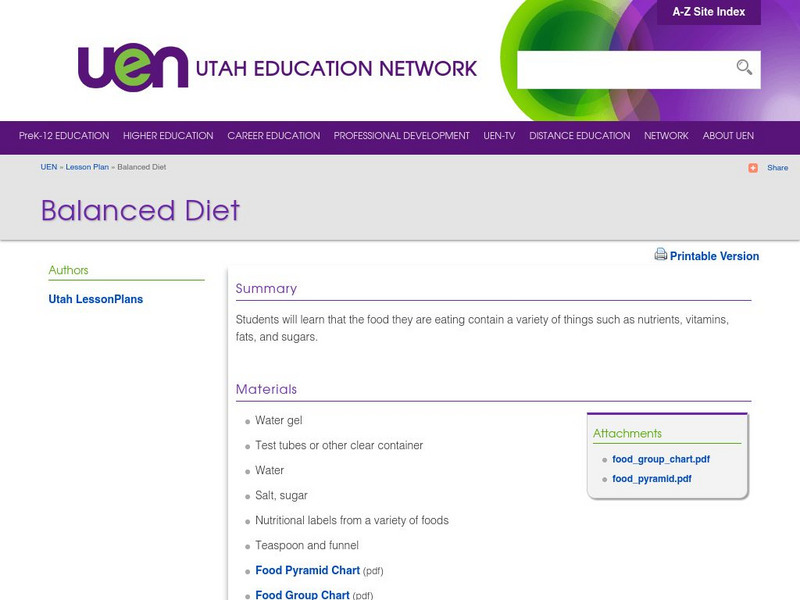

![De Paul University: Center for Urban Education: What Is a Fable? [Pdf] Unit Plan De Paul University: Center for Urban Education: What Is a Fable? [Pdf] Unit Plan](https://static.lp.lexp.cloud/images/attachment_defaults/resource/large/FPO-knovation.png)


